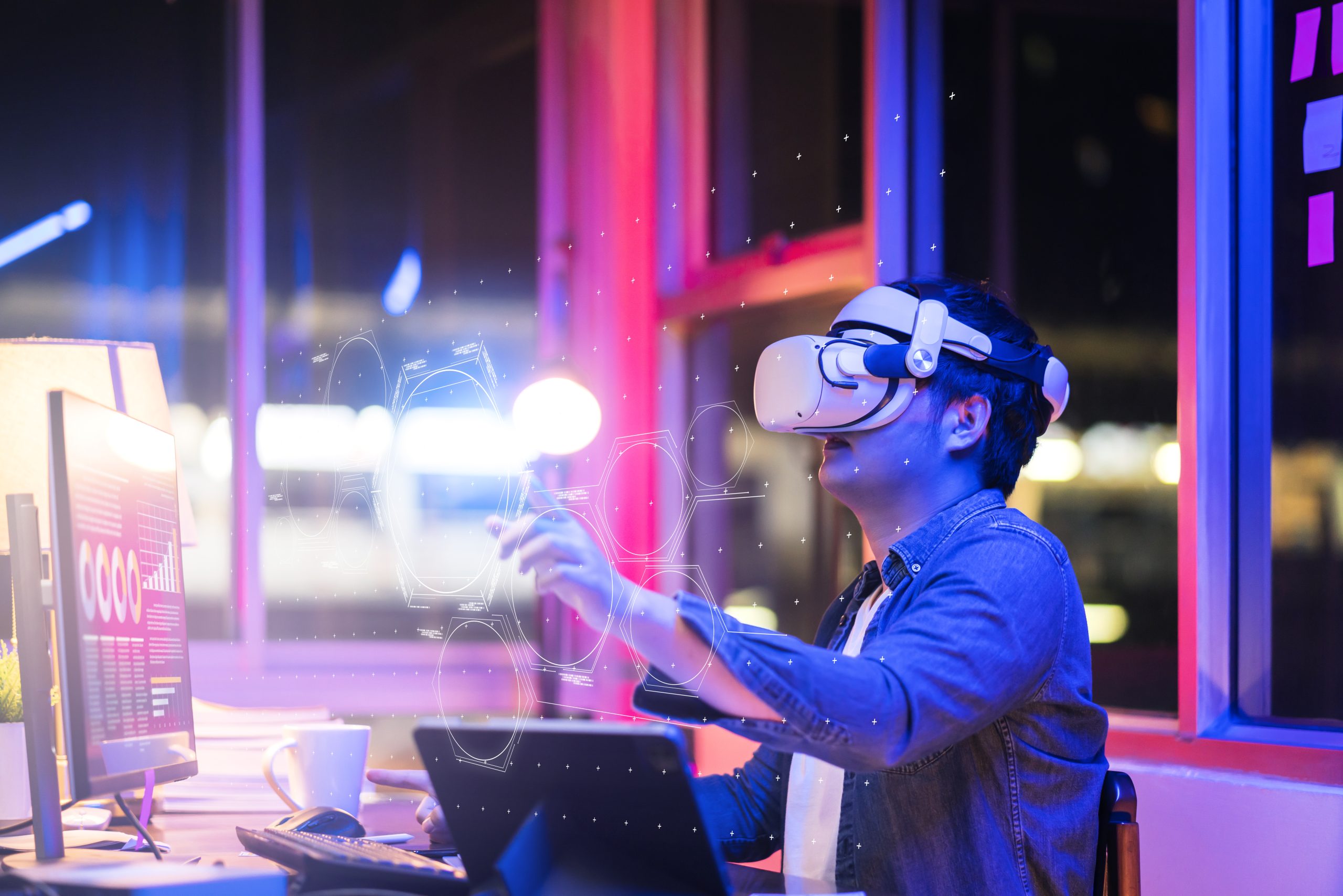Interactive campaigns: The impact of AR on consumer engagement
When it comes to the fast-paced world of digital marketing, businesses are always looking for new and unique ways to capture their audience and increase the level of connection they have with their customers. The breakthrough technology known as augmented reality (AR) is one of the technologies that is driving this transition.
The way businesses interact with their customers has changed a lot since technology came along. More interactive and immersive advertising tactics are becoming more popular than the old ways of advertising. Augmented reality, a technology that adds digital information to the real world, has become a very useful tool for marketers and as we move through the digital age, it becomes clearer how AR will affect the future of marketing.

Photo by Patrick Schneider on Unsplash
The evolution of consumer engagement strategies and augmented reality campaigns
In the past, advertising used standard methods where brands and consumers didn’t connect with each other. With the rise of digital media, however, things changed and People started looking for experiences that were more personalised and interesting. From this point on, It was possible for interactive marketing techniques to be used after this change.
Augmented Reality Campaigns involve the use of AR technology to create immersive and interactive experiences for consumers. By blending the virtual and physical worlds, brands can offer unique and memorable encounters that resonate with their target audience.
Numerous brands across various industries have successfully leveraged AR in their campaigns. For instance, cosmetic brands allow users to virtually try on products and several furniture companies allow users to virtually place furniture around their house through AR applications. This provides a personalized and risk-free shopping experience.
Benefits and impact on consumer engagement
Augmented reality has many effects on how engaged customers are. AR ads can grab people’s attention, make them stay on a page longer, and help them feel more connected to the brands. Furthermore, because AR experiences are interactive, they leave a lasting image that helps people remember the brand, see it from a more positive perspective, and even stay loyal to it as well.
A huge influence in the modern world is that the digital age has caused a big change in how people act as consumers. People today desire to receive their products right away, have personalised experiences, and have the ability to interact with brands. This is where augmented reality fits right in as it satisfies these desires and provides a dynamic and interesting experience for customers.
Examining case studies that highlight the influence of augmented reality on consumer decisions provides valuable insights. From retail to entertainment, AR has proven to be a game-changer in influencing purchasing choices and brand perception.

Photo by Pikisuperstar taken from Freepik
Key components of AR in advertising
- Technical aspects – To use AR in advertising, you need to have a good idea of the technical parts involved. This part talks about the hardware and apps that are needed to make sure that the AR campaign runs smoothly and effectively.
- Creativity and storytelling – AR ads depend on technology, but creativity and stories are also very important. Creating interesting stories within the AR experience keeps people interested and helps them connect emotionally.
- Integrating AR with other marketing channels – To maximize the impact, businesses should integrate AR seamlessly with other marketing channels. Whether it’s social media, email marketing, or in-store promotions, a cohesive approach ensures a unified brand message across diverse platforms.
- Tools and platforms for tracking and reporting – Various tools and platforms facilitate the tracking and reporting of AR campaign performance. This includes analytics tools integrated into AR applications, providing real-time data on user interactions and campaign reach.
Challenges and solutions of augmented reality
Despite the undeniable transformative potential of Augmented Reality (AR) in advertising, anticipated challenges such as technological limitations, cost constraints, and issues with user adoption must be tackled intelligently. Technological limitations include the need for advanced software and hardware, both of which may not be readily accessible or easy to comprehend for many users. Cost constraints are also a significant concern, as AR technology and associated resources can be expensive and may exceed the budget of smaller businesses.
Furthermore, user adoption issues often stem from a lack of understanding or familiarity with AR technology among the target audience, leading to reduced engagement. To overcome these challenges, it is essential to simplify the technology for ease of use, create cost-effective solutions, and educate users about the benefits and uses of AR. To implement a successful AR campaign, a carefully designed strategy that addresses these issues and optimizes the unique capabilities of this technology is indispensable.
Future trends in interactive campaigns
As technology continues to evolve, so do the trends in interactive campaigns. This section explores the future of AR in consumer engagement, highlighting emerging technologies and their potential impact on marketing strategies. From augmented reality glasses to more sophisticated AR applications, the possibilities are vast.

Photo by Lifestylememory taken from Freepik
Augmented reality has a huge and far-reaching effect on how engaged customers are. Augmented reality campaigns have changed the way brands connect with their customers by giving them more engaging experiences that stick with them. When it comes to digital marketing, things are always changing. Using AR as a smart tool can help businesses find new ways to be creative, connect with customers, and keep them coming back.
The world of business is always changing, so it’s important to stay ahead of the curve. Augmented reality isn’t just a trend; it’s a force that’s changing how brands interact with their customers. Looking ahead to the future, brands that want to leave a lasting impression on customers will need to make sure that AR is a part of their marketing plans.


